Access management based on user roles and permissions
Privilege abuse is the biggest threat to cybersecurity today, often resulting in costly losses and even weakening entire companies. It is also one of the most popular attack methods among hackers. If executed successfully, it grants unrestricted access to the IT system and business information, often without triggering alarms until the damage is done.
The solution enables companies seeking protection against this escalating risk to use an advanced privileged access management system that ensures no privileged access path to critical resources and assets is unjustified, unknown or unmonitored. The solution makes sure that privileged users with elevated access to important resources on your network can perform administrative actions according to the permissions granted to them. It also allows you to revoke these permissions whenever necessary. The solution can be integrated with existing SIEM solutions or SOC departments.
What are the benefits of privileged access management (PAM)?

Effective group management and monitoring
With just one click, a user group can be granted special permissions, while privileges can be swiftly revoked if the need arises.

Permission management and reporting
The solution provides insight into who can access resources in your environment and at what level. At the same time, it detects all permissions granted or revoked and establishes an audit trail to identify the administrators making the changes.

Data and group protection
Assigning access permissions to trusted users only and conducting regular reviews will prevent both intentional and unintentional abuse of privileged resources. At the same time, the solution ensures compliance with internal security policies and enables controlled and secure access to the organisation’s resources by third party suppliers.

Password security
The solution facilitates password protection, management and security using a centralized and secure repository for encrypted passwords and access credentials. Additionally, it enhances employee productivity by automating the processes related to password assignment, change, and complexity.

Granular security policy management
Flexible management of security policies for access to critical assets and resources (e.g. session timeout, two-factor access validation, automatic password change on logout, etc.).









